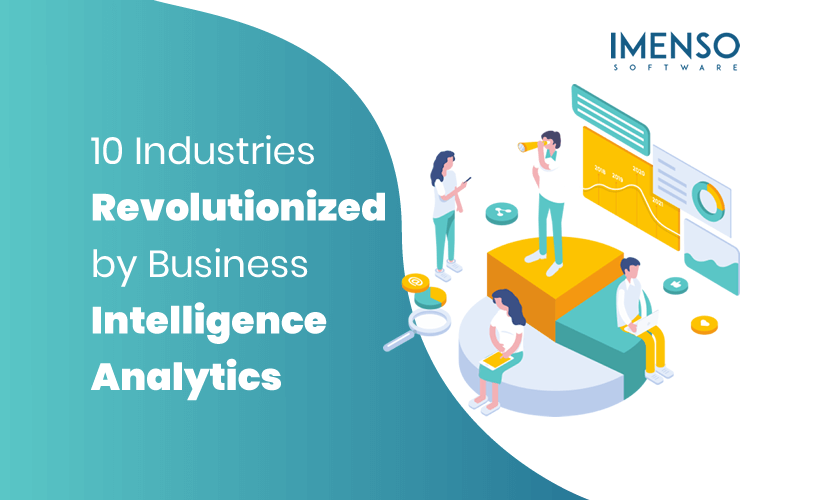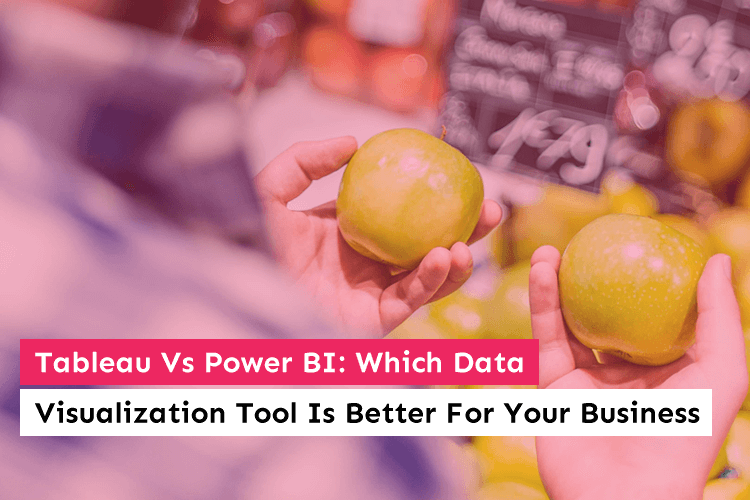Top 10 Features of Power BI for Creating Powerful Data Visualizations

Are you ready to unleash the hidden potential of your business data? In today’s data-driven world, the ability to extract meaningful insights and transform them into actionable strategies is the key to staying ahead of the competition. But with vast amounts of data at our fingertips, how can we efficiently navigate through the sea of information and unravel the hidden secrets within?
Enter Power BI – a game-changing business intelligence tool that empowers you to create powerful data visualizations and unlock the true value of your data. With its arsenal of features designed to simplify data exploration, analysis, and visualization, Power BI solutions is a catalyst for informed decision-making and business growth.
Did you know that businesses that adopt data-driven strategies are 5% more productive and 6% more profitable than their competitors? Harnessing the power of data has become a necessity, and that’s where Power BI shines. In this blog, we will delve into the top 10 features of Power BI that can transform the way you perceive and utilize your data.
Are you ready to discover how Power BI can revolutionize your data visualizations? Join us as we embark on a journey through the remarkable features that will empower you to uncover hidden insights, tell compelling data stories, and make smarter business decisions.
Let’s dive in and explore the extraordinary capabilities of Power BI, putting the power of data at your fingertips!
Intuitive Drag-and-Drop Interface:
Power BI’s user-friendly interface allows you to effortlessly import data from various sources by simply dragging and dropping. With its support for a wide array of file formats and data connections, you can seamlessly integrate data from databases, spreadsheets, and cloud services. A Power BI consultant can help you leverage this intuitive interface to quickly build insightful visualizations without the need for complex coding or technical expertise.
- Effortless Data Visualization: Power BI’s intuitive drag-and-drop interface allows users to easily import and arrange data elements without the need for complex coding or technical skills.
- Seamless Interaction: Users can effortlessly drag and drop data fields, charts, and visual elements onto the canvas, enabling real-time interaction and dynamic exploration of data.
- Instant Visual Feedback: The interface provides instant visual feedback as users drag and drop data elements, allowing for quick and iterative adjustments to create visually appealing and meaningful data visualizations.
- Easy-to-Use Formatting: The drag-and-drop interface simplifies formatting tasks, such as changing colors, fonts, and styles, making it convenient for users to customize and enhance the visual appearance of their data.
- Intuitive User Experience: Power BI’s drag-and-drop interface ensures a user-friendly experience, reducing the learning curve and empowering users of all skill levels to create professional-grade data visualizations.
Robust Data Modeling:
Power BI’s robust data modeling capabilities allow you to create relationships between different data tables, define calculated columns and measures, and perform complex calculations. The powerful DAX (Data Analysis Expressions) language enables you to express intricate business logic and perform calculations that go beyond simple aggregation. If you want to fully harness these capabilities, you might consider hire Power BI developer who can master data modeling in Power BI, unlocking the full potential of your data and deriving meaningful insights.
- Establishing Relationships: Power BI enables users to define relationships between data tables, integrating data from multiple sources for a unified view.
- Blending Data: Users can merge and transform data from various sources, creating a consolidated dataset for comprehensive analysis.
- Calculated Columns and Measures: Power BI allows the creation of calculated columns and measures to perform complex calculations and generate meaningful metrics.
- Hierarchies and Drill-Down: Users can create hierarchies to navigate and analyze data at different levels of granularity, with drill-down functionality for deeper insights.
- Handling Data Granularity: Power BI offers tools to aggregate data for summarization or drill down to lower levels for detailed analysis, adapting to specific business requirements.
Real-Time Dashboards:
With Power BI’s real-time data streaming capabilities, you can monitor and analyze live data as it flows into your dashboards. This feature is particularly useful for tracking key performance indicators (KPIs) and making informed decisions in dynamic environments. By connecting to data sources that provide real-time updates, such as streaming services, IoT devices, or databases with change tracking, you can stay on top of critical metrics and respond swiftly to changing conditions. To make the most of these features, consider hire Power BI consultant who can help you effectively utilize real-time data for enhanced decision-making.
- Live Data Updates: Real-time dashboards in Power BI provide live data updates, ensuring that users always have access to the most current information and insights.
- Instant Monitoring: Users can monitor key metrics and performance indicators in real time, allowing them to make timely decisions and respond promptly to changing business conditions.
- Dynamic Visualizations: Real-time dashboards offer dynamic visualizations that update in real time, providing a dynamic and interactive experience for users to explore data and identify trends as they unfold.
- Alerts and Notifications: Power BI’s real-time dashboards enable users to set up alerts and notifications based on specific conditions or thresholds. This ensures that important changes or anomalies are immediately brought to their attention.
- Collaborative Decision-Making: Real-time dashboards facilitate collaborative decision-making by allowing users to share live dashboards with stakeholders. This promotes real-time discussions and alignment among team members.
Natural Language Query:
Power BI’s integration with natural language processing technology allows users to ask questions about their data using plain English. This feature, known as Q&A (Question and Answer), enables even non-technical users to explore data and receive instant visual responses. By typing or speaking queries, you can swiftly retrieve insights, slice and dice data, and create visualizations without the need to manually configure filters or parameters.
- Conversational Data Exploration: Power BI’s Natural Language Query feature enables users to ask questions about their data using everyday language, making data exploration accessible and convenient.
- Immediate Insights: Users can instantly gain insights by typing or speaking questions in plain language, and Power BI intelligently generates relevant visualizations or responses.
- Smart Suggestions: Power BI provides smart suggestions as users type or speak, guiding them and helping refine their questions for quicker and more accurate results.
- Accessibility: Natural Language Query makes data exploration accessible to a wider audience, empowering business owners and stakeholders without technical expertise to interact with data and make data-driven decisions.
- Improved Productivity: By simplifying the data exploration process and eliminating the need for complex queries, Natural Language Query enhances productivity and allows users to focus on analyzing insights.
Custom Visualizations:
While Power BI offers a vast library of built-in visuals, there might be scenarios where you require specialized visualizations. With Power BI’s custom visuals marketplace, you can extend the tool’s capabilities by downloading and importing visuals created by the community. These custom visuals range from specialized charts to interactive infographics, giving you the freedom to create unique and compelling data visualizations tailored to your specific needs. Partnering with a Power BI development company can further enhance your ability to leverage custom visuals for your unique requirements
- Enhanced Data Storytelling: Power BI’s Custom Visualizations feature allows users to create visually captivating and unique data representations, enhancing data storytelling and making presentations more engaging.
- Tailored Visualizations: Users can choose from a variety of custom visuals and customize them to fit their specific business requirements, ensuring that the data is presented in a meaningful and relevant way.
- Extended Visual Capabilities: Custom Visualizations in Power BI extend the tool’s visual capabilities beyond standard offerings, enabling users to create advanced and specialized visuals using programming languages like JavaScript or R.
- Community-Driven Innovation: The Power BI community contributes to the development and sharing of custom visuals, providing users with a vast library of innovative visualizations to explore and implement in their data presentations.
- Flexible Interaction and Exploration: Custom Visualizations offer interactive features that allow users to interact with visuals, drill down into details, apply filters, and perform dynamic data analysis, enabling more profound insights and more informed decision-making.
Power Query for Data Transformation:
Power Query, an integral component of Power BI, provides a powerful and intuitive interface for data cleansing, transformation, and shaping. Its capabilities include merging and appending data, splitting columns, removing duplicates, and performing calculations. By utilizing Power Query’s extensive set of transformations, you can ensure your data is clean, consistent, and ready for analysis, leading to more accurate and reliable visualizations.
- Efficient Data Import: Power Query simplifies importing data from various sources into Power BI, ensuring seamless integration regardless of format or location.
- Data Cleansing and Transformation: Power Query offers intuitive tools for cleaning and shaping data, removing duplicates, handling missing values, and applying transformations to ensure accuracy and consistency.
- Data Merging and Joining: Users can easily merge and join multiple datasets based on common columns or relationships, creating a unified view for comprehensive analysis.
- Data Splitting and Pivot: Power Query allows for splitting columns, extracting substrings, and reshaping data through the pivot and unpivot operations, facilitating granular analysis and visualization.
- Data Query Folding: Power Query optimizes performance by utilizing query folding, pushing as much data transformation back to the source, resulting in faster and more efficient operations.
Collaboration and Sharing:
Power BI’s collaboration features to facilitate seamless teamwork and knowledge sharing within organizations. Multiple users can collaborate on a single report or dashboard simultaneously, making it easy to combine individual insights and create a comprehensive view of the data. With options to publish reports to the web or share them securely within your organization, Power BI enables you to distribute your visualizations to a broad audience, fostering data-driven decision-making across your organization.
- Seamless Collaboration: Power BI facilitates seamless collaboration among team members by providing shared workspaces and collaborative features. Users can work together on reports, dashboards, and datasets, making it easier to collaborate on data analysis and visualization projects.
- Interactive Sharing: Power BI enables the interactive sharing of reports and dashboards with stakeholders both within and outside the organization. Users can securely share live reports or publish them on the web, allowing others to explore the data, interact with visualizations, and gain insights.
- Controlled Access and Permissions: Power BI offers granular access control and permissions management, allowing users to define who can view, edit, or share specific reports, dashboards, or datasets. This ensures data security and maintains control over sensitive information.
- Real-Time Collaboration: Power BI supports real-time collaboration, enabling multiple users to work on the same report or dashboard simultaneously. Changes made by one user are immediately visible to others, fostering efficient teamwork and reducing version control issues.
- Comments and Discussion: Power BI allows users to add comments, annotations, and discussion threads within reports and dashboards. This feature encourages collaboration, facilitates data-driven conversations, and helps capture insights and feedback directly within the analytics context.
Mobile Accessibility:
In an era where remote work and mobile devices are prevalent, Power BI’s mobile app ensures that you can access your data and visualizations anytime, anywhere. The responsive design and touch-enabled features allow you to explore dashboards, view reports, and interact with visualizations seamlessly on smartphones and tablets. This mobile accessibility empowers you to stay connected to your data and make informed decisions on the go.
- On-the-Go Access: Power BI offers mobile applications for iOS and Android devices, providing users with on-the-go access to their reports and dashboards. Users can stay connected and access critical insights anytime, anywhere, using their smartphones or tablets.
- Responsive Visualizations: Power BI automatically adapts visualizations to fit the screen size of mobile devices, ensuring a seamless and optimized viewing experience. Reports and dashboards can be easily navigated and interacted with on mobile devices, maintaining the integrity of the data and visual representation.
- Touch-Optimized Interactions: Power BI’s mobile applications are designed with touch-optimized interactions, enabling users to explore and interact with data using gestures such as swiping, pinching, and tapping. This intuitive interface makes data exploration and analysis effortless on mobile devices.
- Offline Access: Power BI allows users to access and view reports and dashboards even without an internet connection. Users can download and save the data they need beforehand, ensuring uninterrupted access to insights, even in areas with limited connectivity.
- Secure Mobile Experience: Power BI ensures a secure mobile experience by providing features such as data encryption, device-level authentication, and support for Azure Active Directory. This ensures that sensitive business data remains protected while accessing Power BI on mobile devices.
AI-Driven Insights:
Power BI integrates AI capabilities that enable you to uncover hidden patterns, trends, and anomalies within your data. With features like anomaly detection, key influencers, and automated insights, you can leverage the power of machine learning algorithms to gain deeper insights without requiring specialized data science skills. These AI-driven insights augment your data visualizations, providing valuable context and helping you make data-informed decisions. For expert guidance on optimizing these features, consider data visualization consulting to enhance your analytical capabilities.
- Automated Data Analysis: Power BI utilizes AI algorithms to analyze data and automatically generate insights. Users can quickly gain valuable information without the need for manual analysis, saving time and effort.
- Smart Data Visualizations: Power BI leverages AI to create smart and interactive visualizations that highlight key patterns, trends, and outliers in the data. These visualizations enhance data exploration and make identifying and understanding important insights easier. For comprehensive solutions, consider data visualization services to maximize the effectiveness of these AI-driven visualizations.
- Anomaly Detection: Power BI’s AI capabilities enable the detection of anomalies in data, such as sudden spikes or drops. This helps users identify potential issues or opportunities that may require attention, leading to more proactive decision-making.
- Natural Language Narratives: Power BI incorporates natural language generation to create narratives that explain the insights and trends discovered in the data. This feature enables users to easily understand and communicate the findings to stakeholders.
- Personalized Recommendations: Power BI’s AI-driven insights provide customized recommendations based on user behavior and data analysis. These recommendations suggest actions or next steps to optimize performance or address potential challenges.
Conclusion:
Power BI is a game-changer in the world of data visualization. With its top 10 features, Power BI empowers businesses to transform raw data into actionable insights. From intuitive drag-and-drop interfaces to real-time dashboards, AI-driven insights, and collaboration capabilities, Power BI offers a comprehensive solution for data exploration and analysis. By harnessing the power of Power BI, businesses can unlock the full potential of their data and make informed decisions that drive success. Leap and discover the transformative power of Power BI for your business today.
Similar Posts

10 Industries Revolutionized by Business Intelligence Analytics
Back in the 1960’s companies used to make decisions based on data calculated with a lot of human resource and effort. But since the rise of technology and the ease of collecting and storing data, business intelligence is the new way through companies and enterprises are making decisions to meet their most ambitious goals. ...

Tableau vs. Power BI: Which Data Visualization Tool is Best for Business?
Managing a company’s data is a whole process in itself, from assembling data on a centralized server of all the departments to presenting it for the annual reports. It is a task. That is why big corporations across all industry verticals now have full-time data analysts to study data and abstract insights from it. ...

Power BI Cybersecurity Dashboard: A Game-Changer for App Security
Imagine this: your business is developing, and so is your data. But with development comes a nagging fear—what if a security breach occurs? It might cost you your data, beliefs, and, worse, your customers. It’s a circumstance that no business owner wants to face, still, it’s seemly more common every day. Thankfully, there’s a wise […]...









